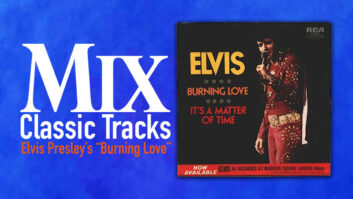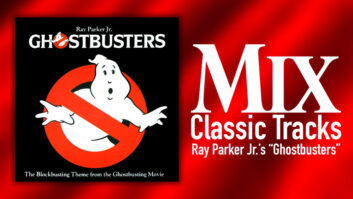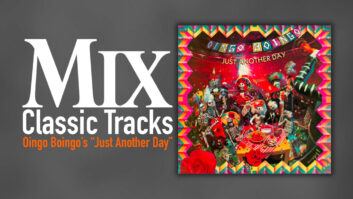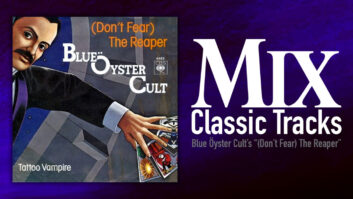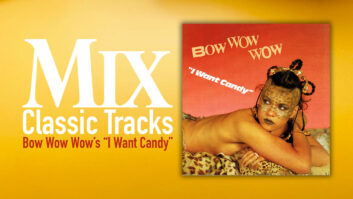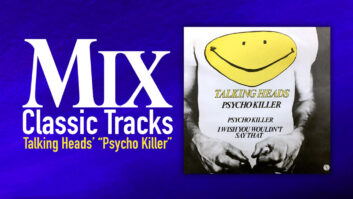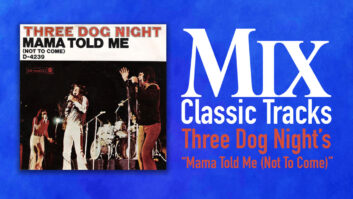Elvis Costello began his music career with the purest intentions: “My ultimate vocation in life is to be an irritant,” he told the New Music Express‘ Nick Kent in 1978, “someone who disrupts the daily drag of life just enough to leave the victim thinking there’s maybe more to it all than the mere hum-drum quality of existence.”
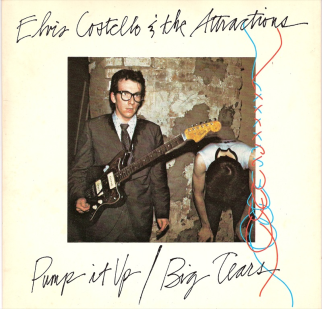
This was during the heady days of English punk, when Costello was performing for journalists nearly as much as for fans and cultivating the image of a tortured, angry young genius. He wasn’t really punk; he was too literate for that. He was a young singer/songwriter/bandleader whose varied influences included big band jazz (including his own trumpet-playing dad), The Beatles, Motown, Burt Bacharach, George Jones and The Clash. But anger was the mood of the day.
Costello’s first record deal came by way of his friendship with Nick Lowe, who was enjoying success in London’s pub-rock scene. Through Lowe, he met manager Jake Riviera and was signed to Dave Robinson’s Stiff Records label. Riviera and Lowe helped put together a band to accompany Costello on his debut album, My Aim Is True, which was recorded in London’s small Pathway Studios with various musicians from the San Francisco Bay Area band Clover (whose frontman had been Huey Lewis) and from The Rumour (who also played with the wonderful singer/songwriter Graham Parker) and Lowe producing.
That first album got a lot of attention, and some of the singles — “Watching the Detectives,” “(The Angels Wanna Wear My) Red Shoes,” “Alison” — remain staples in Costello’s concert set lists. But the signature sound fans would come to identify with Costello wasn’t fully realized until the Costello camp assembled The Attractions. Drummer Pete Thomas, bassist Bruce Thomas and keyboard prodigy Steve Naive first appeared on the artist’s sophomore effort, This Year’s Model, which includes this Classic Track, “Pump It Up.”
In the liner notes to Rhino Records’ deluxe edition of Model, Costello acknowledges the band’s effect on the album as a whole: “The Attractions made a huge difference to these songs. ‘(I Don’t Want to Go to) Chelsea’ had originally used the same stop-start guitar figure as The Who’s ‘I Can’t Explain’ (or for that matter, The Clash’s ‘Clash City Rockers’). Now Bruce and Pete came up with a more syncopated rhythm pattern and Steve found a part that sounded like sirens — although he rarely played the same thing twice, so you had to pay attention.”
The newly formed group had time for some rehearsals and live dates in support of My Aim Is True before they went into London’s Eden Studios to record. Lowe was again the producer, and the engineer was Roger Bechirian, who had been on the technical staff at Eden for several years at that point and had already done a good deal of remix work for Stiff Records.
“Dave Robinson was never happy with the first mix or the second mix or the third,” Bechirian recalls. “He would always end up with the tenth or the twelfth mix before he was vaguely happy. So a taxi would turn up with a whole lot of 2-inch tapes in the trunk, and I would just remix all kinds of things.”
Among those remixes had been the U.S. single versions of Costello’s “Red Shoes” and “Alison.” “I think that was kind of a test, more or less, with Nick, Elvis and Jake to see how we fit together,” Bechirian says. “We got on very well. I think Jake was looking for someone to partner with Nick in the studio because Nick was completely hopeless technically. Nick’s thing was more about the vibe; it was all about getting the really great, exciting take. He might coach the way they were thinking about stuff: ‘Think about doing it this way, be more aggressive at these points,’ but it was all about getting that excitement from the band.”
In his album notes, Costello writes, “Roger was a calm and practical foil to Nick’s instinctive and emotional approach to recording. It was Roger who had the task of making a sonic reality out of Nick’s directions, such as, ‘Turn the drums into one big maraca’ or, ‘Make it sound like a dinosaur eating cars.’”
“Pump It Up” could very well be the song in the “dinosaur eating cars” reference. Written by Costello during the touring that preceded the Model sessions (and during, he says, a night of “what might be politely called, ‘assisted insomnia’”), it’s intensely rhythm-driven, to the point where rhythm and melody are almost one. Naive’s Farfisa organ part uncharacteristically models the driving drum and bass lines, and Costello’s vocal is raw power on this rhyme-bending indictment of excess: “She’s been a bad girl/She’s like a chemical/Though you try to stop it/She’s like a narcotic/You wanna torture her/You wanna talk to her/All the things you bought for her/Putting up your temperature/Pump it up…”
The basic tracks for “Pump It Up” were recorded midway through the album sessions. Bechirian says he would typically set the band up in a semicircle, facing Pete Thomas’ kit, which was set up in a corner of the rectangular studio. They captured those band tracks live to an Ampex 16-track at 15 ips. Bechirian says he used a reliable mic setup for the band: Neumann U 87s on toms, AKG 451s overhead, an old Beyer 201 on kick and another 451 on snare. Bass and keyboards were taken direct, and Costello’s guitar amp was miked with a Neumann U47 and a Shure 57. His vocal mic, however, was a little more unusual. “That was a mic that I’d actually found at Beyer’s offices in South England, near Brighton, called the Soundstar,” Bechirian recalls. “It was a dynamic mic, a wonderful thing with a shiny chrome front and gray plastic, and I used that exclusively on Elvis because he had a very powerful voice and also an enormous amount of water vapor and spittle, so condenser mics would cancel out halfway through a take. So I ditched all of those and went for a dynamic mic. It pulled out the midrange just the way you wanted and created that really intense vocal sound he had.
Live Sound Showcase: Elvis Costello
“Most of the tracks on This Year’s Model, including ‘Pump It Up,’ were the live basic tracks,” Bechirian continues. “There may have been a word here, a line there that was redubbed because it was slightly out of tune or [Costello] wanted to change a phrase, but it was almost entirely intact from basic tracks. All the energy was really captured at that moment.”
And according to Bechirian, the energy was considerable. “Everybody was very focused,” the engineer says. “The whole place was charged with electricity during those sessions. They knew they were about to break big.”
The entire album was mixed at Eden by Bechirian, with Lowe and Costello in attendance. They worked on Eden’s custom console, which Bechirian helped build in the early ’70s when the studio moved from its previous location to its current one in Chiswick, West London. “It was based on Neve circuitry, and designed by Chris Glass, who was an absolute electronic genius, and Mike Gardner, who is still one of the studio owners and who’s still keeping the place going meticulously well. The amplifiers have the most incredible headroom. You could throw anything at them, and like Neve, they just would not break up. It had a really clean signal path. We even built our own compressor and limiters, which were based on Audio Design circuitry — there were six of them built in.
“[During the mix,] Nick wanted to make sure the bass sat in well with the kick,” Bechirian recalls, “so we worked on that quite a bit. The only other thing really was to make sure Elvis’ voice was always up front. I think Elvis thought his voice was harsh. I remember quite a few times when he’d wince when it was a harsh sound, but it did work.”
This Year’s Model was released in spring of 1978 to rave reviews. The album peaked at Number 30 on the U.S. charts, and was followed by Elvis Costello & The Attractions’ first full-blown U.S. tour. They made three more wonderful albums with the Lowe/Bechirian production team before Costello began to spread his artistic wings in all manner of directions and genres. Eventually, The Attractions disbanded, but almost all of Costello’s subsequent projects have featured Pete Thomas and/or the ultra-talented Naive. “Pump It Up” remains a perennial encore at almost all Costello concerts that don’t include a symphony orchestra.
Bechirian became an independent engineer/producer after This Year’s Model was released. He continued engineering and producing bands post-Costello and with Costello. Subsequent clients included Squeeze, Dave Edmunds, Lowe, Carlene Carter, The Undertones and more. He was also called in to remaster Costello’s early albums for reissue. But several years ago, he switched gears and now operates his own artist-management firm, Trick Management. He says he sometimes misses studio work, but a return to that would require the right time and the right artist. “So,” he says with a laugh, “Bruce Springsteen, if you’re listening…”
